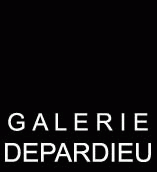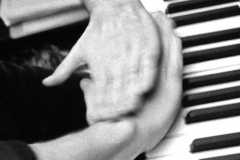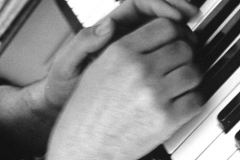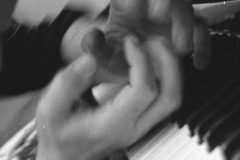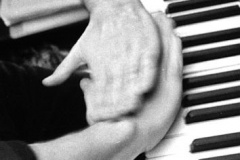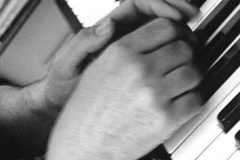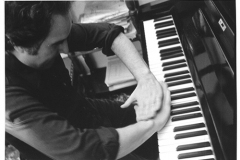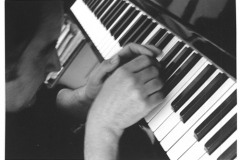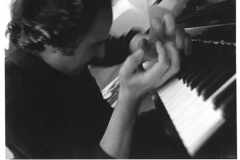For Chiari (1926-2007), music and art expressed
themselves in a « complete » way because his own vision of the
world was complete.
By freeing himself of all fidelity to
materials and techniques, he escaped immediate recognition by the
market and its instrumentation. Art could thus go from being a
« production of objects » towards a « production of
experience ». The musical and gestural action, the fragment,
the document, the photocopy, the typographic press, the sheet of
paper, the book, the manipulated instrument, the paper, the word, the
sound, etc., are all elements that Chiari would use to visualize to
the full his transgression from the « continuous », as a
search for new and original elements, to be inserted into the game of
History of Art.
His work took place in a system of « paraconsistant » logic which happened to allow forms of contradiction. In this way we reach a sort of disruption of the Leibnizian postulate : it is not the possible worlds that create the laws of logic; on the contrary, we are the ones who choose the diverse ideas of a possible world, according to our logical demands. The figures of the composers Sylvano Bussotti and Giuseppe Chiari are central to the formalization of this range of knowledge of music and art, transforming it into new languages. But it was with Radical Architecture, established in Florence in 1965/66*, that this paradigm of interpretation found a lasting historical expression.
Guiseppe Chiari took part in four Biennials in Venice and in fourteen Fluxus Festivals in Europe. The Kunsthalle of the Fridericianum Museum of Kassel dedicated a big retrospective to the artist in 2001 and the National Gallery of Modern Art in Rome organized an exhibition of his work in February 2005.
